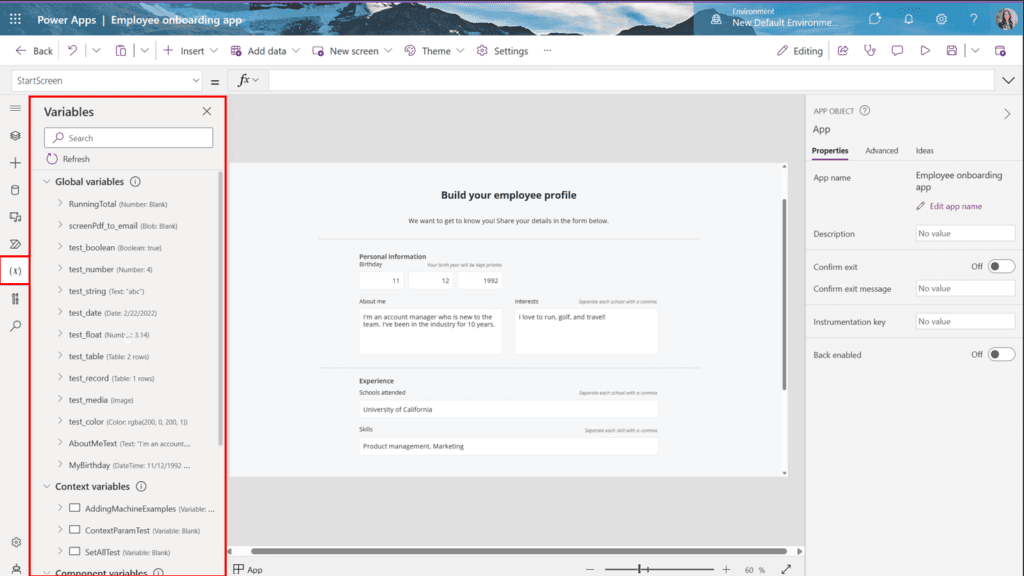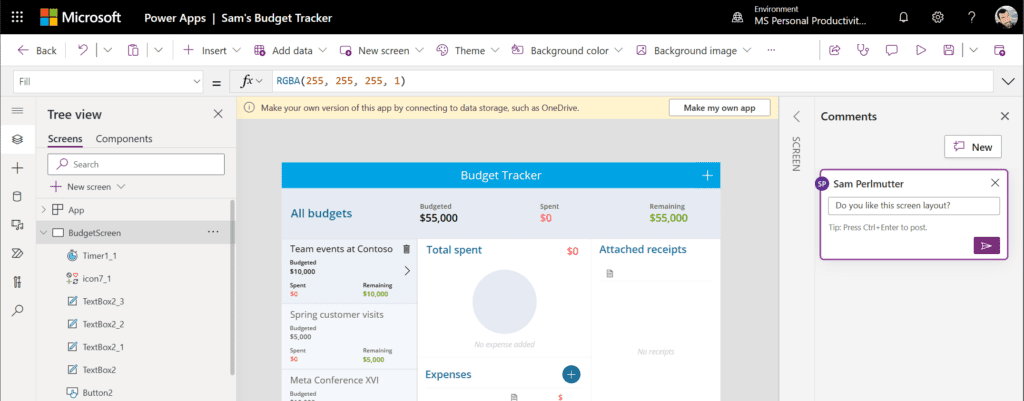What’s New With Microsoft’s Power Platform in April 2023
- Blog
- Power Apps
- Post

This month, as promised, we’re seeing the Microsoft Power Platform lean into AI enhancements. Many of these new AI-powered features are genuinely useful, and they should certainly improve as users provide feedback to the company.
As I always advise, you shouldn’t use experimental features in production apps, but once they cross the threshold to preview, that means that Microsoft is going to be rolling them out to all users in the future. Certainly, you should try out experimental features in non-production apps to get a feel for them yourselves. Anyway, let’s peek at some of the new Power Platform features introduced in April 2023.
Improved variables and collections experience in Canvas Designer
The Power Apps Canvas Designer now includes a side-rail tab for variables and collections. Much like how the “Tree viewer” allows the selection of individual controls, you can now select your variable and then view the code where it’s defined and used in your app. Selecting the code section also brings it up in your formula bar for easy editing. This function allows you to view variables of all types, including collections, without leaving your canvas screen.

Power Apps gets better at implicit type conversion
Power Apps has just gotten smarter at what Microsoft is calling “implicit type conversion,” or “coercion.” What does that mean? It means that you won’t need to define the specific data type for your function anymore.
Power Apps is now smart enough to attempt to figure out when you need to do a mathematical calculation and understand when your data is a value vs. a text. In other words, you will not always have to wrap textual numerals in a Value() so that the formula recognizes you want to use the number 3 and not the text character 3.
Formulas and mathematical operators will also be able to hazard a guess whether your data is Boolean(), Value(), or Text() based on the context of your formula. You may still need to help define it in some more complex formulas, but this is a positive step forward when you’re trying to incorporate untyped objects (such as JSON) into your formulas.
This feature, though still experimental (you must enable ParseJson function and untyped objects), should move to Preview soon.
Microsoft expands access to Copilot in Power Apps
You may have seen my demo in the last month related to using Copilot for Power Apps where I use natural language to create a working app. Microsoft is now making these Copilot capabilities available to builders on a sign-up basis. That, and the other new experimental features that rolled out in the March 2023 update are summarized on the Power Apps blog.
Comments in Power Apps and Power Automate
Microsoft just announced the general availability of comments in Power Apps and Power Automate. Just as in other Microsoft products, comments can now assist users in collaborative app/automation building in Canvas Studio, Modern App Designer, and Power Automate.

A look at Power Automate’s “Describe it to design it” future updates
There’s not much else to update this month regarding Power Automate, but Stephen Siciliano, VP of Power Automate gave us a look-ahead at the work that the Power Automate team is doing to enhance their Describe it to design it feature which rolled out last October. Specifically, they are fine-tuning their Azure OpenAI models based on our usage.
Interestingly, the exec provided a stat revealing that 76% of the flows within a week’s time ran at least once, vs. a mere 43% when created by scratch, or 64% when created via template. So, this is an indicator that developers are successfully using them with more room for growth. Rest assured, Microsoft is going to continue developing the Copilot feature for Power Automate and plans on releasing more features for it in the coming months.
PowerBI updates
In the PowerBI realm, we mentioned last month that you can now use the new On-Object Interaction feature, which is currently in preview. Microsoft has been busy incorporating our feedback into this feature as they continue to enhance it.
Also, if you have been using the opt-in experimental Quick Measure Suggestions feature based on Azure OpenAI, you should be aware that it’s now enabled by default. Microsoft is pretty confident that using the power of AI in converting natural language into DAX is going to be something that we’ll all appreciate!
